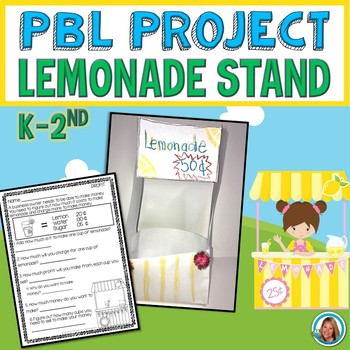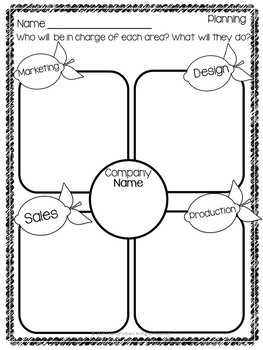Project Based Learning Activities | Lemonade Stand
- PDF
What educators are saying
Description
Looking for a FUN PBL to engage your students in using academic skills to solve real-world problems? Try this engaging two week unit on how to make a successful lemonade stand. They will learn math skills, teamwork, build a model, design a lemonade stand and end with a group presentation to entice investors to give them funding for their project.
Project Based Learning is great way to incorporate standards
►What is in this download?
Focus: Design, Economics, Math, Writing, and Speaking
- Directions
- Suggested Lesson Plans for a two week PBL Unit
- A 7 Page Journal
- Planning Sheets
- Design Printables
- Vocabulary Poster
- Money Posters
- Teacher and Student Rubrics
- Recipes
- Extra Activities
- MORE
* Students are encouraged to do some research on their own about lemonade stand designs. For K students, the teacher can do research whole group.
CHECK OUT THE PREVIEW
Materials needed to complete the entire unit:
Poster Board
Markers
construction paper
Pencils
Lemons, Sugar, Water (If you want to make lemonade at the end of the unit.)
Check out the PREVIEW!
⭐ Encourage Critical Thinking Skills
RELATED PRODUCTS
Unit 1 Kindergarten Math Centers Numbers 1-5
Unit 2 Kindergarten Math Centers Numbers 1-10
Unit 3 Kindergarten Math Centers Sorting and Classifying
Unit 4 Kindergarten Math Centers Addition within 5
Unit 5 Kindergarten Math Centers Counting Sets to 20
Unit 6 Kindergarten Math Centers Measurement and Data
Units 7-10 are in progress
Unit 11 Kindergarten Math Centers COMPARING NUMBERS
Unit 12 Kindergarten Math Centers Addition to 10
Unit 13 Kindergarten Math Centers SUBTRACTION to 10
Copyright © 2019 Cindy Martin (Teacher’s Brain)
All rights reserved by author.
How to get TPT credit to use on future purchases:
• Please go to your My Purchases page (you may need to login). Beside each purchase you'll see a Provide Feedback button. Simply click it and you will be taken to a page where you can give a quick rating and leave a short comment for the product. Each time you give feedback, TPT gives you feedback credits that you use to lower the cost of your future purchases. I value your feedback greatly as it helps me determine which products are most valuable for your classroom so I can create more for you. ☺
Be the first to know about my new discounts, freebies and product launches:
• Look for the green star next to my store logo and click it to become a follower. Voila! You will now receive email updates about this store.
☺ First 24 HOURS of new products over $1 are ½ off!





